Steven Sandor's Blog, page 78
March 8, 2016
Games in sweltering conditions, separation from family: NASL life means big adjustments for European imports
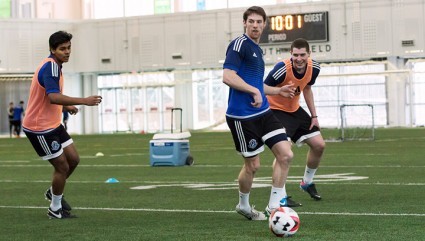
Daryl Fordyce
FC Edmonton forward Daryl Fordyce remembers one of his first road games after he made the move from Northern Ireland to the NASL.
It was a road date in Fort Lauderdale.
“Once you go down to Florida and the hot places, you have to get acclimatized,” said Fordyce. “My first game down in Fort Lauderdale it was 23 degrees (Celsius), and I though it was really hot and the guys were saying that this is mild.”
And that’s the thing for a lot of players coming over from European leagues; playing games in the summer, in hot, humid climates, is something they don’t do often — or at all. What would be considered a temperate day in Florida was sweltering to someone coming over from Northern Ireland.
“And, then, you go down to San Antonio a few months later and it’s 32 degrees,” said Fordyce. “It’s about adjusting to the different climates and the games, obviously, are a little bit slower, you can’t go 100 miles per hour for 90 minutes. As for back in Britain, it’s a colder country, it’s a bit like us (Edmonton) at home. It’s cooler and you can be aggressive for longer times in the game. But whenever you go away, the heat saps your energy a little bit quicker.”
Heat. Many hours in the air and in airports. Moving from pristine grass pitches to new artificial turf to old artificial turf to grass pitches you’d wish would be replaced with artificial turf. That’s the North American soccer experience. And, for players coming from abroad, it requires a massive change in perspective. You can go from Edmonton’s cooler climate to sweltering conditions in the American Deep South. That’s an awfully hard adjustment to make for players who come from countries where a long road trip is a bus ride that takes a couple of hours.
You can go from Edmonton’s cooler climate to sweltering conditions in the American Deep South. That’s an awfully hard adjustment to make for players who come from countries where a long road trip is a bus ride that takes a couple of hours.
Adam Eckersley’s brother, Richard, played in MLS with both Toronto FC and the New York Red Bulls. So, the Eddies’ new English signing should be well aware of the challenges playing in North America will provide.
“If we were to very well this year, maybe even win the league, I think it would be my biggest achievement in football, because of the conditions, because we’re going from Astroturf to grass pitches, cold climate to warm climate,” says Adam, who made the move from Scottish side, Hibernian, to the Eddies. “The changes are, well, you’re not just playing a football match, you’re playing also the conditions as well.
“It’s going to be very, very challenging to go to these places and get results, but the squad is up for the challenge. We have a great team here and I hope we go and do it.”
But, for Eckersley, climate and travel are secondary when compared to his largest sacrifice — being far away from his family.
“For a player coming from Europe, especially someone like me, it’s leaving all my family behind. That was my biggest challenge. Making a 16-hour journey across the water. I’ve lived abroad before but, in Europe, and my family could have been with me in a couple of hours by plane. It’s a bit of a different story here. My mom and my dad have got to take a couple of weeks off work to come across here. That’s the biggest change for me.”
For the Eddies, though, things will be more even this season, in terms of travel, at least. Traditionally, FCE started out on an extended road trip, as there was fear over home game in April being hit with cold weather. Heck, an Amway Canadian Championship game — in May — was snowed out last year. But, this year, the Eddies will play a balanced early-season schedule, and will have their home opener in the second weekend of the spring campaign.
The league has addressed what was an imbalance. It wasn’t fair that the Eddies didn’t play more home games in cold weather, when the teams from the American south got plenty home dates in the height of summer. It wasn’t competitive that the warm-weather teams got to use their weather advantages, while the cold-weather teams didn’t.
So, the Eddies will still have to deal with extreme heat when the team goes on the road in the summer, but at least there will be a few more cool-temperature home games in the early spring and late autumn.
Eddies can’t wait to leave cramped confines of Commonwealth Fieldhouse
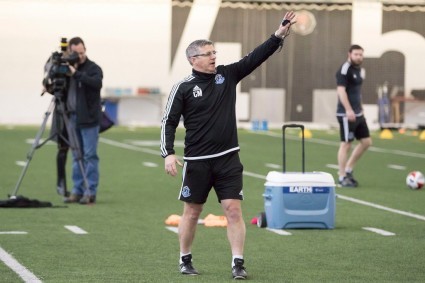
Colin Miller
The Eddies are a little bit stir crazy.
Except for a few days spent on a full-sized field in Saskatchewan, the Eddies’ have spent training camp on the miniature indoor pitch at the Commonwealth Fieldhouse. With a full squad, the space is cramped.
So, coach Colin Miller can’t get wait to get on the plane to Amsterdam and then connect to Scotland. The team leaves Thursday and will play a series of preseason matches against Scottish sides and Newcastle United’s youth sides before heading back to North America and the April 2 NASL season opener at Rayo OKC.
“The guys are in a good place, but we need to get out of here,” Miller said after Tuesday’s training session. “It’s getting claustrophobic. Guys are on top of each other, there’s a bit of chirping going on at training, as you would imagine. We’re now into our fourth or fifth week of preseason at this little place and it’s understandable that we need to get out and get some fresh air. “Our games will come thick and fast in Scotland, then we’ll come back and have an inter-squad game the Saturday before Oklahoma. Then we’ll be good to go. We’ll travel down on the Wednesday and get to Oklahoma, train Thursday and Friday and then we’re good. The next two and three weeks are going to fly by.”
“Our games will come thick and fast in Scotland, then we’ll come back and have an inter-squad game the Saturday before Oklahoma. Then we’ll be good to go. We’ll travel down on the Wednesday and get to Oklahoma, train Thursday and Friday and then we’re good. The next two and three weeks are going to fly by.”
The reason the Eddies are limited to the tiny spot is because Edmonton has no full-size fields that are protected from the winter elements. All of the indoor soccer facilities in Edmonton are of the turf-and-board variety.
The space is even more cramped because Brazilian midfielder Gustavo Salgueiro is finally in Edmonton. Even though he was signed in the offseason, his arrival has been delayed because of paperwork. But, that’s now in place and Gustavo — who doesn’t speak English — was on the pitch letting his abilities do the talking for him.
“He’s got real good qualities,” said Miller. “He’s what I thought he would be when we watched him. I’m really pleased, he’s got a lot of ability. He’s already picked out a couple of passes this morning where the guys are going ‘where did that come from?’ So, touching wood, there’s never any 100-per-cent guarantees at any level of the game, but I think he’ll be a strong addition to the squad. I think the fans will love him and, if he is what we think he could be, he could be a real difference-maker for us.”
Defender Adam Eckersley should be able to join full training once the team gets to Scotland — because the Eddies will be on grass surfaces there as opposed to Commonwealth’s artificial pitch. Eckersley said he’s close to full recovery after he hurt his groin playing for Hibernian in December. He was running on the sidelines on Tuesday as the team trained.
Brazil, Brazil, Brazil: Canada’s forecast calls for a heavy dose of canary yellow
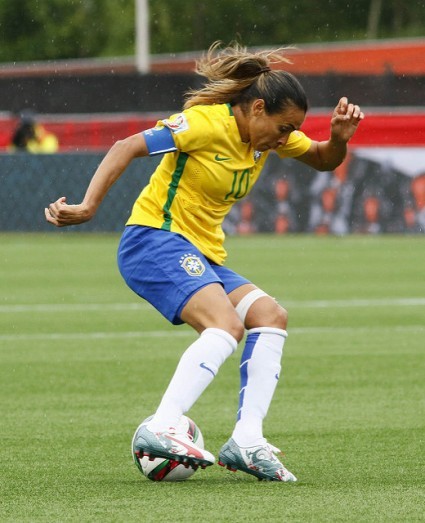
Brazilian star, Marta. PHOTO: CANADA SOCCER/ GREG AGNEW
The Canadian women’s national team is going to get so used to playing Brazil, that they should consider blasting Sepultura during training sessions and cooling down to the sounds of Bebel Gilberto.
The Canadians will face Brazil in Wednesday’s Algarve Cup championship. And, the team will host Brazil for two friendlies — June 4 at Toronto’s BMO Field and June 7 at Ottawa’s TD Place.
For the Canadians, the Brazilians represent a different kind of opponent. At the recent CONCACAF Championships, the Canadians played less-developed soccer nations — at least when it comes to the women’s game — that struggled to keep their shapes. In the group stage of the Algarve Cup, Canada played low-scoring matches against Denmark, Belgium and Iceland — physical sides that play their systems to a tee. Canadian midfielder Diana Matheson said that in Europe, they play the 4-4-2 consistently as they grow up, which makes those sides — even the lesser European women’s soccer nations — very difficult to pick apart.
But the Brazilians aren’t as rigid as the European sides at the Algarve Cup, nor are they as mistake-prone as the CONCACAF minnows. And, being the hosts of this summer’s Olympic tournament, the Brazilians are a target team for the Canadians.
“It’s a tough test for us,” said Canadian women’s team coach John Herdman. “But, certainly, not a team that frightens Canada too much.” But Herdman is pleased with the team’s progress, even though a 1-0 loss to Denmark followed by 1-0 triumphs over Belgium and Iceland won’t convince any of the cynics that the Canadian team is over its major obstacle — finding offence against the better sides. A lack of offensive punch was evident at the Women’s World Cup, and younger players have been brought in, the so-called “mavericks,” to make Canada’s attack more unpredictable.
But Herdman is pleased with the team’s progress, even though a 1-0 loss to Denmark followed by 1-0 triumphs over Belgium and Iceland won’t convince any of the cynics that the Canadian team is over its major obstacle — finding offence against the better sides. A lack of offensive punch was evident at the Women’s World Cup, and younger players have been brought in, the so-called “mavericks,” to make Canada’s attack more unpredictable.
And, Herdman isn’t too worried about the recent low-scoring matches. He understands that the big, physical European sides are tough to break down. And he needs those young players to face that kind of adversity if they are to grow ahead of the Olympics.
“I’m not worried by the lack of scoring, we’ve got to keep pushing,” he said.
And he thinks if Canada keeps creating chances at the pace that it has over the past several games, sooner or later the multiple-goal games will come. “It’s a matter of time,” he said. He reiterated that Janine Beckie’s goal against Iceland, which came after some wonderful combination play at the top of the box from Sophie Schmidt and Christine Sinclair, was about as good as it gets. And he’s right — it was one of the prettiest “team” goals Canada has scored in his time as coach.
But, time will come when the “we’re creating plenty of chances, but” storyline has got to change to “we converted our chances.” But, Canada isn’t worried about its game at the moment — or, at least, Herdman and his charges aren’t showing it.
March 7, 2016
Canada beats Iceland and the elements in Algarve Cup
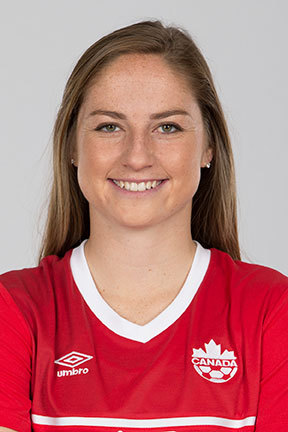
Janine Beckie
There was a time when playing in high winds would create trouble for the Canadian national women’s team. The conditions would make it difficult to play route-one soccer.
But, on a windy Monday in Portugal, Canada got a 1-0 win over Iceland — and thanks to results elsewhere, it was good enough to claim top spot in the group and and a date in the tournament final against Brazil.
Janine Beckie got the goal for Canada, after some good build-up play from teammates Christine Sinclair and Sophie Schmidt.
“It was totally Sinc and Sophie,” said Beckie. “I was just lucky to get on the end of it. It was a great combination on top of the box, those two just doing what they do, and making it loo easy. And then, Sinc playing the perfect ball for me, it was an easy finish because of the set-up.” Beckie said the Canadians knew, because of the windy conditions, that the game would be hectic. In fact, on the Iceland Football Federation site, the match report read that the cold and windy conditions made it feel downright homey for its national team. Basically, these were conditions that the Icelandic team would be far more used to than the Canadians.
Beckie said the Canadians knew, because of the windy conditions, that the game would be hectic. In fact, on the Iceland Football Federation site, the match report read that the cold and windy conditions made it feel downright homey for its national team. Basically, these were conditions that the Icelandic team would be far more used to than the Canadians.
“We came up against an Icelandic team that play a very direct style,” said Canada women’s national team coach John Herdman. “Against their 30 kilometre-per-hour wid in the first half, we said to the girls that it was about not coming down to that level and trying to live in their half. And I think they did, and they got a wonderful goal, one of the best goals that I’ve seen Canada score.”
There is only one real way to combat the wind, and that’s to abandon speculative long balls and crosses. Keep the ball on the ground and build, build, build.
“We took advantage of playing on the ground and playing our game against a team that really doesn’t want to play with us,” said Beckie. “We really dominated the game and that made it easy for forwards to have opportunities.”
Yet, despite all of the opportunities, despite looking to knock the ball around, Canada has scored just twice in the first three games of this tournament. Yes: Sinclair, Canada’s all-time leading scorer, is nursing a bad back. But, Canada will still need to create more goals — not just chances — if it is to get back to medal contention at the Rio Olympics.
Overwhelmingly Canadian Power Rankings, MLS Week 1
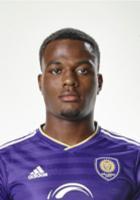
Cyle Larin
Wow. What a high-scoring, last-gasp-scoring, topsy-turvy opening week for MLS.
But we’re not here to celebrate that — we’re here to monitor the development of Canadian talent in North America’s pro ranks. And, for the second year in a row, we’ll be ranking Canadian players by the simplest and most revealing metric of them all — how many minutes of first-team action that they get with their pro teams.
Last year, then-Atlanta Silverback (and now Ottawa Fury member) Kyle Porter was the Canadian who saw the most minutes out of any MLS or NASL team. We measured MLS and NASL separately from the USL for a couple of major reasons.
1. In USL, Canadians can be domestics league-wide. In MLS and NASL, Canadians are only domestics on Canadian-based teams.
2. The three Canadian USL sides have Canadian Soccer Association-mandated minimums they must meet in terms of putting Canadians on the field.
But it was a notable opening week in MLS for Canadians: Cyle Larin scored in Orlando City’s remarkable comeback against Real Salt Lake; the Lions came from two goals down in second-half injury time. Toronto FC gave full 90s to Will Johnson and Jonathan Osorio in their 2-0 win at the New York Red Bulls. The Whitecaps started two Canadians. (And, if you’ve seen our MLS season preview, you’ll understand that it was Vancouver that actually had the most successful opening weekend out of the three Canadian teams. Why? Because MLS Cup history shows us that teams that struggle early in the season are the ones who will be there in the end.)
(And, if you’ve seen our MLS season preview, you’ll understand that it was Vancouver that actually had the most successful opening weekend out of the three Canadian teams. Why? Because MLS Cup history shows us that teams that struggle early in the season are the ones who will be there in the end.)
Eight Canadians played in the MLS opening weekend. Compare that to last season’s week one, in which only four Canadians saw the field.
But, it’s worth noting that only two Canadians played for U.S.-based teams; Larin and FC Dallas’s Tesho Akindele. And, Akindele has his U.S. paperwork and doesn’t count as an import. So, the cynic will note that, in a league that allows Americans to be domestics on Canadian teams but dictates that Canadians are imports on American teams, only one Canadian without U.S. certification made it onto the pitch for a U.S.-based side on opening weekend.
Here’s the list:
MLS AND NASL MINUTES BY PLAYER, THE CANADIANS
T1. Fraser Aird, Vancouver, MLS, 90 (1)
T1. Will Johnson, Toronto FC, MLS, 90 (1)
T1. Cyle Larin, Orlando City, MLS, 90 (1)
T1. Jonathan Osorio, Toronto FC, MLS, 90 (1)
5. Kianz Froese, Vancouver, MLS, 66 (1)
6. Anthony Jackson-Hamel, MLS, 37 (1)
T7. Tesho Akindele, FC Dallas, MLS, 6 (1)
T7. Ashtone Morgan, Toronto FC, MLS, 6, (1)
TEAM RANKINGS, MINUTES PLAYED BY CANADIANS IN 2015, RANKED BY AVERAGE MINUTES PER GAME:
Toronto FC, MLS, 186/1
Vancouver, MLS, 156/1
Orlando City, MLS, 90/1
Montreal, MLS, 37/1
FC Dallas, MLS, 6/1
March 6, 2016
Marcel de Jong feeling positive about his first few weeks with the Ottawa Fury
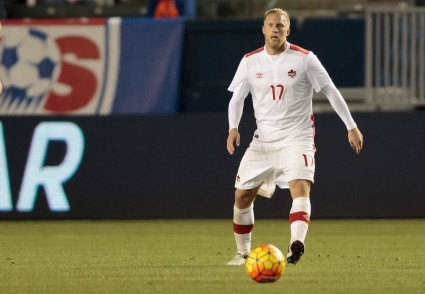
Marcel de Jong PHOTO: CANADA SOCCER
Marcel de Jong’s departure from Sporting Kansas City and short-term deal with the Ottawa Fury were only announced earlier this week. But the Canadian national team winger/fullback knew for months that his MLS odyssey had come to an end.
After a decade of pro soccer in Germany and the Netherlands — and carrying years of international football experience, de Jong was expected to carry a major load for SKC after he signed there in 2015. But, after seeing regular starts early in the season, he was relegated to squad duty. In the end, he played just 13 games and got just 847 minutes of MLS action.
And, to this day, he says he isn’t sure why he fell out of favour with coach Peter Vermes.
“I thought I did OK, especially at the beginning of the season,” said de Jong. “But, for some reason he decided he didn’t want to play me anymore. But, that’s his decision.” At the end of the 2015 MLS campaign, de Jong met with the coach and it was clear that the team didn’t want him back. He started looking for options; he said he had a few to juggle, but joining the NASL’s Ottawa Fury — where fellow national-teamer Julian de Guzman is plying his trade — was his best option.
At the end of the 2015 MLS campaign, de Jong met with the coach and it was clear that the team didn’t want him back. He started looking for options; he said he had a few to juggle, but joining the NASL’s Ottawa Fury — where fellow national-teamer Julian de Guzman is plying his trade — was his best option.
Even though he’s been at Ottawa’s camp since the outset, the termination of his SKC contract and his new Fury deal were only just announced. The Fury deal only lasts till the break between the spring and fall seasons, so de Jong can look for a new club in the July transfer window. In fact, his wife and daughter have remained in Kansas City.
“But, if I like it here, it can become longer term,” said de Jong. “And, I have liked what I have seen so far. So far, what I have seen with the Fury has been very positive.”
He knows the Fury got to the NASL championship game last season. He also knows the team has been gutted and rebuilt under new head coach Paul Dalglish. So, de Jong can only judge the team by what he’s seen so far in cao.
“I think this is a very good group, a good coach, good training staff. So far I think what the coach is doing is very good, I like what he’s bringing to training. He knows what he’s doing. And we have a couple of young players, a couple of older, experienced players. We really have a good mix of guys.”
But de Jong says his decision to come to NASL wasn’t influenced by de Guzman’s presence in Ottawa or the fact that Nik Ledgerwood, another veteran national-teamer, has signed with FC Edmonton. De Jong said that Ottawa was simply the best fit.
No matter their reasons for coming to the league, the NASL will likely get great PR mileage from the Canadian roster for the huge March 25 and 29 games against Mexico. It will likely feature de Jong, de Guzman and Ledgerwood.
“Really, these are the biggest two games of the year for us,” said de Jong. “For Canada to get a result at home, or even away, it’s going to be huge for us. We’re all really looking forward to it.”
March 3, 2016
The only 2016 MLS preview you’ll need
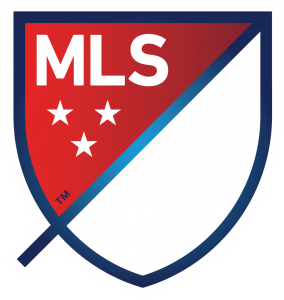 If you’re an MLS fan, no doubt you have been subjected to lots of meaningless season previews and prediction panels. Nothing says this-is-a-sign-of-how-journalists-are-killing-journalism than mail-it-in season previews and predictions based on wobbly logic. So great to write stuff that’s shelf life dies so quickly.
If you’re an MLS fan, no doubt you have been subjected to lots of meaningless season previews and prediction panels. Nothing says this-is-a-sign-of-how-journalists-are-killing-journalism than mail-it-in season previews and predictions based on wobbly logic. So great to write stuff that’s shelf life dies so quickly.
(Yes, I have written my fair share of season previews. And hated doing them. Nothing is worse than making someone paid to write stories to come up with lists and rankings. Ugh. But a Toronto FC player did once have my Toronto Sun spread taped to his locker — after I picked the Reds to finish last — so there’s that.)
Why do we keep boring our readers with season previews? Will we ever learn? Last season, only two teams — the New York Red Bulls and FC Dallas — picked up wins in more than 50 per cent of their games. And neither of those sides made it to the MLS Cup final. Four points separated the No. 2 seed from the No. 6 seed in the Eastern Conference. How do you possibly handicap a league where excellence is defined by earning far less than an average of two points per game? It’s like trying to pick your favourite shade of white.
Simply put, this is a league that, despite the introduction of Designated Players, hasn’t moved away from parity. Those so-called game-changers haven’t really changed the games all that much. They’ve given us the illusion of bringing great change to MLS, but in fact Drogba and Kaka and Giovinco and Keane only fit right into the the league’s law of averages — even if they do offer highlight-reel entertainment.
To put it bluntly: MLS is always a crapshoot. It has been like this in the past, and it will be like that again.
This is not meant to be an anti-MLS rant; it’s the way the league is. Parity is something that generally appeals to the North American sports fan. It’s why we give the worst teams the best draft picks; it’s why we have salary caps. We try our hardest to prevent dynasties. The league fits into a North American sports fabric — and that’s absolutely fine.
But, instead of looking at comings and going and key players and all that stuff that won’t matter one lick when the first ball is kicked this weekend, let’s look at the TWO major factors that will decide whether or not your favourite MLS team will contend:
Rule 1: You want your favourite team to suck early in the season.
Yup, you read that right. If you understand how MLS works, you’ll know that you want your team to be doing anything but playing its best soccer early in the season. Thanks to a long schedule, travel and the playoff system, MLS is a league that’s not about consistency — it’s about peaking at the right time. That right time is the autumn. Teams can’t possibly stay hot for an entire year, and the good ones save their best games for later in the campaign.
In fact, the more your teams sucks early in the season,the better your chances of seeing silverware at the end of it. So, Toronto FC fans, don’t worry about a long road trip to start the season; early-season losses are harbingers of big-time success down the road! And, for fans in the respective cities watching the Montreal Impact-Vancouver Whitecaps match, cheer for the other guys! It’s the RIGHT thing to do!
Let’s look at the previous four MLS Cup winners:
Last season, the Portland Timbers didn’t win a match in March. And, the Timbers went on to win just three of their first 12 games. Yet, thanks to a strong finish and a surge in the playoffs, the Timbers captured their first MLS Cup.
Now, go back to 2014. The Los Angeles Galaxy took MLS Cup — but, like the Timbers didn’t win a game in March (but, to be fair, the Galaxy only played two games in that month). More telling is that the Galaxy won just two of its first eight MLS matches.
In 2013, Sporting Kansas City won its first game of the season, then went winless in its next three. It too suffered a very rough start to the season — and then went on to win MLS Cup.
In 2012, the Galaxy lost three of its first four matches and went on to win MLS Cup.
Rule 2: You don’t want a player on your favourite team to have an MVP season.
Sure, Sebastian Giovinco brought us out of our seats last year, but let’s be honest. His MVP season, his spectacular goals — all it did was elevate Toronto FC to the sixth playoff spot in the East. And that was a spot that didn’t exist in the 2014 season.
Fact is, only once since 2009 has the player who has won the MVP award also got his hands on MLS Cup. That was Robbie Keane in 2014. Last season was an extreme example, when some of the most anonymous teams in the league went on deep runs in the playoffs while the superstar-Designated Player-laden sides sat on the sidelines. But this speaks to the fact that, no matter how wonderful the DP, the salary cap always wins — and parity rules.
So, got it? No individual greatness. A terrible start to the season. Those are the key ingredients your favourite MLS team needs to have success in the long run. So cheer for that high-priced Designated Player to struggle, and for your team to lose its home opener!
It’s what an educated MLS-team supporter would do.
March 2, 2016
Herdman laments “same old Canada” in Algarve Cup loss to Denmark
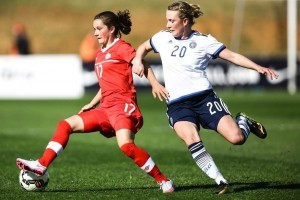
Jessie Fleming in action against Denmark. PHOTO: CANADA SOCCER
Canada’s national women’s team scored goals in bunches against CONCACAF minnows in the regional qualifying for the Olympics. Coach John Herdman’s teenage and twentysomething “mavericks” almost had us believing that Canada could shake its international reputation of being a team that’s challenged up front outside of Christine Sinclair.
But, after being shut out by the Americans in the final of the CONCACAF tournament, and then beaten 1-0 Wednesday by Denmark in the opener of the Algarve Cup, the questions remain. When the level of opposition rises, can Canada score?
And, with Sinclair limited by a bad back, it’s time for those mavericks to show that they can press without the No. 2 all-time scorer in women’s international soccer in the lineup.
Herdman lamented the fact that teenager Gabrielle Carle missed a golden chance near the end of the loss to Denmark. But he shrugged and said that she’ll learn from the mistake.
And that’s the issue with Canada. The women’s team is too good to really take any lessons from smashing up Caribbean and Central American sides, but not getting enough out of its games against top competition. It’s like Canada is in a limbo between the so-called “A” teams and the poorer sides.
“You come into this competition, it’s definitely a step up from the CONCACAF qualification,” said Herdman. “We played a Danish team that narrowly missed out on qualifying for the Olympics in a tough pool.”
Teenagers Deanne Rose and Jessie Fleming featured for Canada. Youngster Ashley Lawrence was at left back. Janine Beckie, just out of the NCAA, got another start in a forward position. It’s a young side, granted, but as the Olympics get closer, these young players will need to start carving out goals against teams with national anthems shorter than three minutes long.
“Same old Canada, we’re not scoring,” Herdman admitted. “When we get great opportunities. we’ve got to take them.”
“(It was) a little bit of a rude awakening. As the game got tougher, the players just seemed to suffer a little bit.”
March 1, 2016
FCE’s Ledgerwood says that his Alberta return still hasn’t sunk in yet
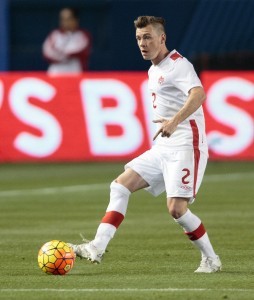
Nik Ledgerwood PHOTO: CANADA SOCCER/JOHN DORTON
Even though Nik Ledgerwood has been in training camp on Alberta soil for the past three weeks, it still hasn’t really hit him that he’ll be playing home games this year, well, at home.
From 2003 to 2015, the Lethbridge, Alta.-born Ledgerwood plied his trade in Europe, spending most of those years in Germany. But, the Canadian national-team regular has been the most-hyped signing of FC Edmonton’s off-season. But, even though he’s probably seeing quite a few more pick-up trucks on the streets than he did in Europe, the fact that he’s actually at home, being paid to play the game he loves, is still a bit surreal.
“It really hasn’t sunk in yet. It’ll still take the first game, the first home game before it sinks in,” Ledgerwood said after the NASL team’s training session Tuesday at Commonwealth Fieldhouse. “Right now, it’s the preseason and we’re grinding away. It will be a little better with the camp coming up in Scotland, at least we’ll get some games. But, that’s not in Alberta, I’ll still be in Europe. I think it will be after that first home game that I’ll realize that I’m actually back home playing professional soccer.”
The Eddies will head to Saskatchewan later this week to get some action in on a full-sized field; the city of Edmonton has no covered full-sized fields. Then, it’s off to Scotland to finish the preseason schedule with a series of friendlies against Scottish Premier and First Division clubs, plus a match against Newcastle United’s youth side. Ledgerwood will need to leave the Scottish camp a little bit ahead of the rest of his teammates, as he needs to head to Vancouver and link up with the national side ahead of its massive March 25 World Cup qualifier against Mexico.
Growing up in Alberta, Ledgerwood knew of many of the efforts to launch pro teams in Calgary and Edmonton that ended up in failure. In the early 2000s, when Ledgerwood was in his prime, the idea of playing on a stable Alberta-based pro team (key word: stable) was a pipe dream. But, FC Edmonton has changed the game, even though the team is still losing money in Clarke Field.
“There were a lot of failed teams that tried,” Ledgerwood said. “I mean, hats off that they tried. But, at least FC Edmonton is sticking around and it looks like they have the ambition to be around for a long time and they’re doing it the right way.”
“I think it’s huge for Alberta to have a professional team that’s been going for, what, six years now. It gives the young players something to look up to, to look forward to. They should be coming out to games and watching us train. If that’s what they want to look towards, it’s right in their doorstep now. That’s huge for Alberta and Canadian soccer.”
But, even though Ledgerwood was able to essentially land his dream job, the chance to play soccer close to home and family, it’s not an option that presents itself to many Canadians toiling in Europe.
“The surprising part is that for a Canadian to come back to Canada, it’s still extremely hard,” said Ledgerwood. “That’s pretty sad at the end of the day. Anybody trying to get into an MLS team in Canada or into an NASL team in Canada, it’s not just a showing-up-and-saying-you’re-here kind of thing. There’s a lot of work that goes into it. You still have to be on top of your game and be better than the players still here. At the end of the day, it’s not just about having that Canadian passport that allows you to play in Canada.
“I know lots of guys who would love to play in Canada. But the Canadian teams, unfortunately, we’re still not at the point where we support our Canadian players like we should. I say that more towards MLS teams, because I know the NASL teams in Canada do support the Canadian players. But, at the end of the day, just because you’re Canadian doesn’t mean you can play for a Canadian team.”
“I got lucky that things worked out really well with Edmonton and it was a team that I wanted to go to, to come home.”
Ledgerwood isn’t the first Canadian national-teamer to come to NASL; Julian de Guzman arrived in Ottawa last season and it hasn’t hurt his standing with national-team coach Benito Floro in the least. And, Ledgerwood is impressed with what he’s seen so far in Edmonton.
And, so far, he has liked what he has seen.
“I think it’s extremely high. I think training has been great, the first three weeks, we’ve done a lot of hard work — especially emphasizing on the fitness and the defensive aspect of our game and how we want to go about that. I think we’re definitely moving in the right direction and getting everybody’s on the same page. Everybody’s been great; the new guys coming in are pulling their weight and the experienced guys are doing the same.”
And he’s also been impressed by another Western city — Vancouver. Like many of his national-team mates, he was blown away by the partisan crowd that cheered Canada on to victory against Honduras in November. And, with ticket sales for Canada-Mexico already at over 35,000, with only a limited number going to Mexico fans, the roar should be even greater on March 25.
“That’s what’s going to drive more games to be played out west,” he said. “It’s got to have a home-field feel to it. If we’re bringing in good teams like Mexico or Honduras we’re not going to Toronto and make them feel like they’re playing a home game. Vancouver’s a good choice for us right now.”
“If Vancouver’s bringing over 40,000 people, we’ll be playing in Vancouver again, I assume.”
GUSTAVO UPDATE: As of Tuesday, Brazilian midfield Gustavo Salgueiro still hadn’t joined FC Edmonton.
Gustavo signed with the club in the off-season but his arrival has been delayed by paperwork issues. Coach Colin Miller said the team is simply waiting for the passport to clear and then Gustavo can officially become an Eddie. He said Gustvo might be a day or so behind the rest of the squad’s arrival in Saskatchewan, where the team will train later this week before heading to Scotland. The international paperwork could also mean that Gustavo will be a day or two behind the team in getting to Scotland.
February 26, 2016
Canada’s pick becomes the new FIFA president
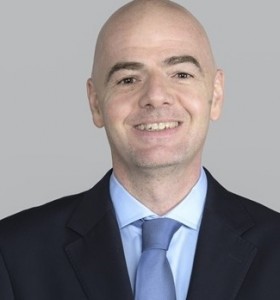
Gianni Infantino
The man who had the open support of the Canadian Soccer Association is now the new president of FIFA.
Switzerland’s Gianni Infantino won the presidency Friday after he got 115 of 207 votes on the second ballot. After the first ballot, Infantino had 88 votes while Bahrain’s Sheikh Salman bin Ibrahim el-Khalifa earned 85. But, on the second ballot, Infantino picked up 27 votes, while Salman increased his vote count by only three.
On Thursday, the Canadian Soccer Association issued a statement that its Board of Directors had been unanimous in throwing this country’s support behind Infantino, a supporter of reform measures and a backer of increasing the World Cup finals from 32 teams to 40.
Now, it’s early to read too much into this, but backing the eventual winner right from the beginning can’t hurt Canada’s bid to host the 2026 World Cup. The United States supported Jordan’s Prince Ali (the same candidate that Canada supported last year in an election that Sepp Blatter win) from the first ballot, then looked to move to Infantino on the second ballot.
Infantino said “we will restore the image of FIFA and the respect of FIFA” in the wake of an awful year in which American and Swiss investigators arrested several key officials on corruption and bribery charges, and Blatter and former UEFA president Michel Platini received bans for illicit practices.
Infantino told the FIFA congress that the worst of times are over, and that FIFA must begin a new era based on a reform package that was passed before the election. CSA president Victor Montagliani was a big part of the team that came up with the package, which creates a clear distinction between the executive and administrative arms of FIFA (basically, what all good governments do). The elected officials make policy decisions, while the administrators make sure those policies and programs are implemented. According to the reforms, which become FIFA law in 60 days, there will be no more blurring of those lines.
As well, a push towards a 40-team World Cup might help Canada, as it would likely mean at least another spot or two for CONCACAF — which would help this country’s odds of getting back to the tournament for the first time since 1986. (Of course, if Canada hosts the World Cup in 2026, it automatically qualifies).
But the reform packages weren’t praised by all. FIFpro, the labour organization that represents players around the world, said too much power is still in hands of national organizations, many of which are easily corrupted.
“Despite a package of reforms approved today by FIFA, FIFpro fears placing increased power in the hands of FIFA’s 209 member association lies at the heart of the problem,” read a statement from FIFpro. “These member organizations are not representative of the game and, yet, wield enormous influence over issues that affect key stakeholders such as the players, fans, clubs and leagues. The newly adopted reforms failed to address the fundamental issue of making football authorities accountable to the game’s most important actors.”
As well, there is the fact that Infantino worked closely with the now-disgraced Platini at UEFA.
But, thanks to the term limits that are part of the reform package become law, Infantino will not be able to serve more than three cycles as FIFA president.




